4.9 1890+ Google Reviews
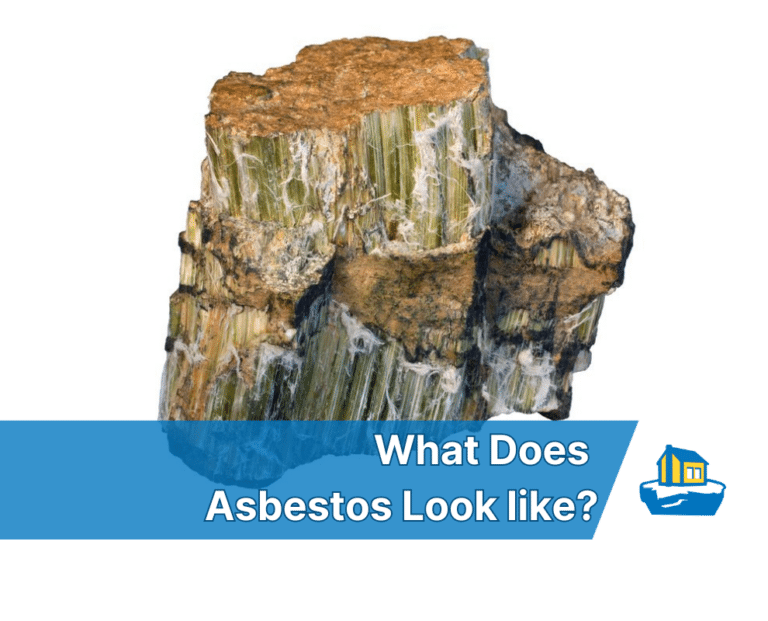
As a home inspector, I often get asked what does asbestos look like. The reality is that asbestos is a mineral that is mined. It basically looks like a rock. There are six main types of asbestos but to the untrained eye, they just look like rocks.
Raw asbestos goes through a series of crushing into small pieces. At each stage, workers or machines vacuum the fibers from the larger pieces. Next, these fibers move through a series of filters to separate different sizes. Finally, workers package and seal the fibers once separated by the filters. Manufacturers buy these raw fibers and use them in various products.
American manufacturers used asbestos in thousands of products before the EPA banned it in most products. Plus, according to the Scientific American, the first known written reference about asbestos was around 300 BC. Indeed, Theophrastus, an ancient scientist, wrote about a rock that looked like rotted wood. He explained that it could be burned without harm. During that time, ancient tailors wove asbestos fibers into cloth so they could whiten it with fire.
Unfortunately, con artists would even sell asbestos crosses and robes as relics of Jesus Christ. They would set the “relics” on fire to “prove” to their authenticity. Luckily for them, their gullible audience paid top dollar for these relics.
It wasn’t until the 1860’s when asbestos finally made it into building products. Its fire protection qualities made it a great material for roofs. During this era, house fires were common and spread quickly from house to house. After that, the construction industry used many asbestos containing materials into the building process.
Vermiculite insulation looks like pebbles or gravel. Builders poured it into an attic floor and sometimes the walls. It is true that vermiculite does not contain any asbestos in its natural state. However, most of it in America comes from mines in Libby, Montana. These mines were near a natural deposit of asbestos. Accordingly, these asbestos fibers from the asbestos veins tainted the vermiculite. Most importantly, the EPA (Environmental Protection Agency) states that you should assume all vermiculite contains asbestos.

Asbestos roofing is another standard asbestos cement product. It looks similar to slate but becomes more fibrous when cracked or damaged.
Like asbestos siding, asbestos roofing doesn't pose much health risk. It is outside and generally non-friable. However, most asbestos roofing is at the end of its life. Due to the occupational hazard of removing it, replacing it is much more expensive than replacing a traditional roof.
Andrew Wuench provided this photo.
Spray-on texture, also known as popcorn texture, was a blessing for contractors starting in the 1950s. Of course contractors used popcorn ceilings as an easy way to hide imperfections. Additionally, popcorn ceilings are fire and sound resistant.
Unfortunately, a simple hand touching the ceiling can release asbestos fibers into your home. As a result popcorn ceilings containing asbestos are quite hazardous.
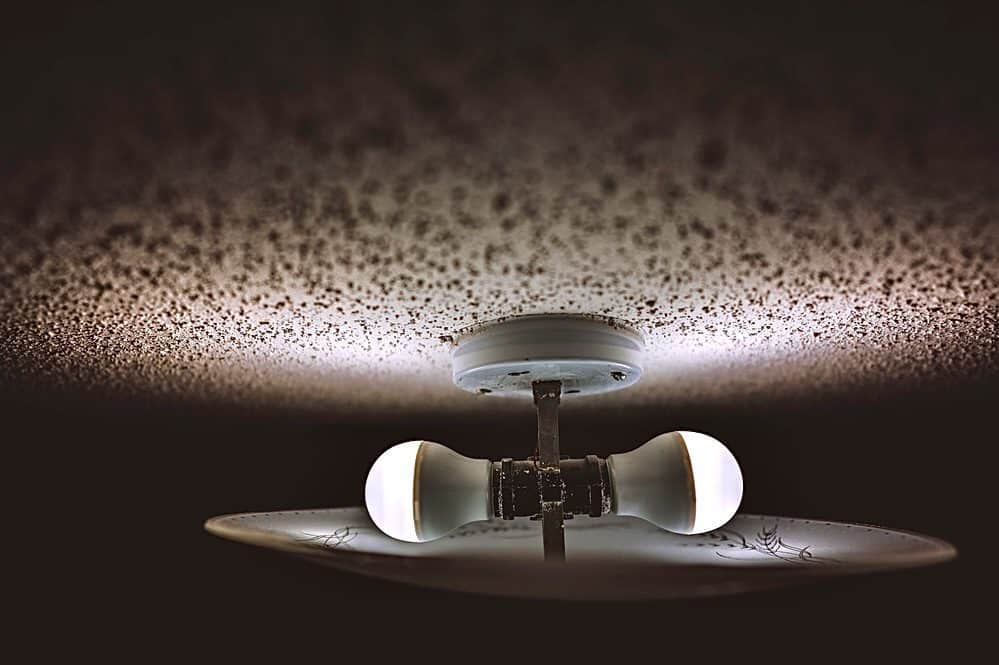
Due to its heat resistance, plumbers used asbestos to insulate hot water pipes. As a result, you'll often find it on boiler pipes and hot water distribution pipes in older houses.
Air pockets created by alternating layers of corrugated and flat asbestos sheets created insulation.
Unfortunately, most pipe insulation today is in poor condition and friable.
They were very durable and easy to install making asbestos floor tiles extremely popular. The most common size of the tile was 9×9, but there were also 12×12, and 18×18 tiles that contained asbestos. Keep in mind, if you have a loose tile in your home and see black adhesive underneath, it likely contains asbestos as well.
Fellow home inspectors, Zack Gillepsie and Matt Mickinney provided the following photos.
Churches and auditoriums loved asbestos ceiling tiles for their great acoustic properties. However, they were also used in homes for finishing the basement.
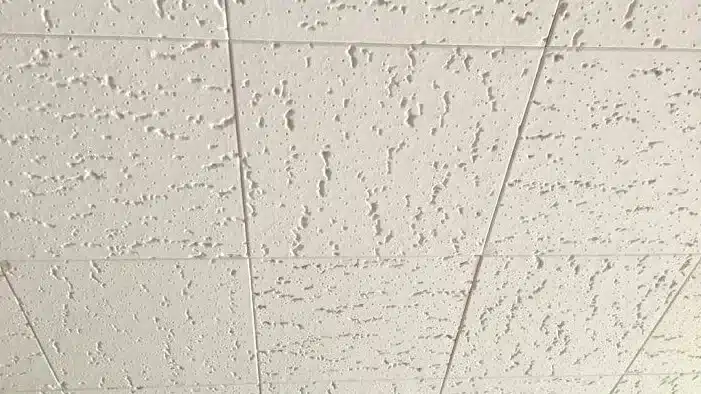
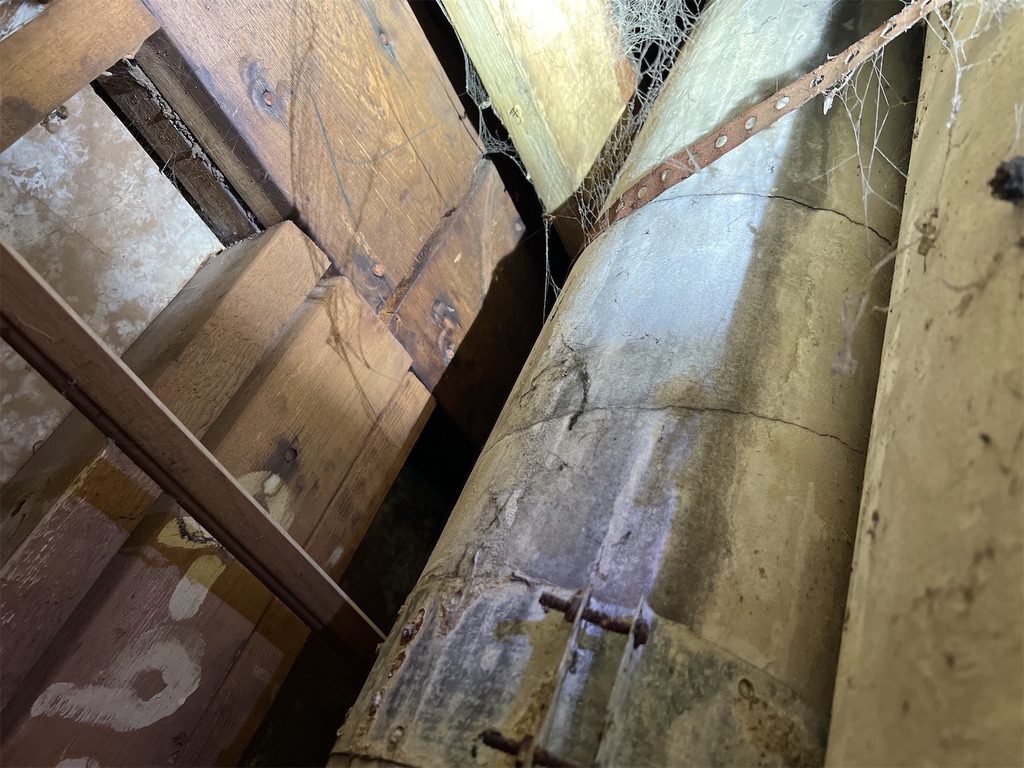
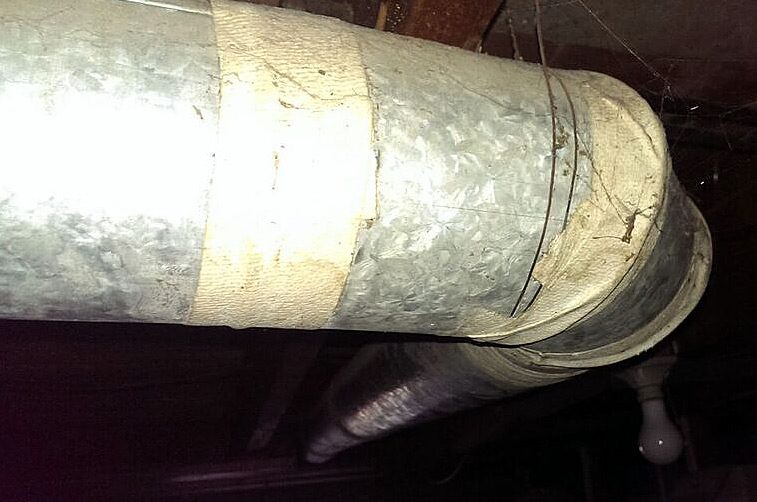
Asbestos is a naturally occurring product that is great at resisting heat. As discussed, it has been used in many materials for thousands of years.
The good news is that only friable asbestos is considered to be dangerous. Friable means easily crumbled. Materials that are crumbly will release fibers into the air. Inhaled fibers get permanently stuck in our lungs. This is what causes lung diseases such as asbestosis and mesothelioma.
Asbestos products like siding, floor tiles, and transite are generally non-friable asbestos and aren’t able to cause any health issues. However, loose insulation, popcorn ceilings, and pipe insulation are friable and are a health hazard. Also, any asbestos in poor condition can release fibers.
There are many health risks involved with asbestos exposure including lung cancer. Obviously it is a good idea to find out if you have it in your home. Testing is the only way to know for sure if a material contains asbestos. Although you can hire a professional to test your home for asbestos, there are many DIY kits available.
Always follow the instructions that come with the asbestos test kit. Be safe and wear the proper PPE.
Generally, you only need a small sample the size of a quarter. Then, you put the sample of the material in the provided sample bag. Lastly, you send it off to the asbestos testing lab.
The asbestos testing kit below comes with all your PPE, instructions, and the lab fee.
If your home does contain asbestos, then your next step depends on its condition. Remember that only friable asbestos is a health hazard. If it is in good shape, then you may be able to live with it. Otherwise, if you have crumbling areas, water damage, or renovations requiring demolition work, then removal or encapsulation is your best option.
Federal regulations do allow homeowners to handle their own asbestos abatement. However, asbestos removal is best left to a professional. Asbestos contractors are trained in the safest way to to remove asbestos without toxic fibers contaminating the rest of the house.
InterNACHI (International Association for Certified Home Inspectors) is the largest and most respected home inspector association. They state that home inspectors are not required to inspect, or test for, any environmental hazards. This includes asbestos ceiling materials.
That being said, many home inspectors do point out items that they suspect may be ACM (asbestos containing material). However, there are millions of products that contain asbestos and home inspectors only perform a limited, visual inspection.
Likewise, it would be impossible for a home inspector to know every material which may contain asbestos let alone test every suspected material.
So, what does asbestos look like? There are many different products in older buildings that contain asbestos. As discussed, the presence of asbestos is a health risk. However, your chance of exposure is directly related to the material’s condition. Therefore, if you suspect you have asbestos in your home, you should definitely test it or have it tested.
Qualified asbestos professionals should handle all treatment, reduction, removal, and disposal of asbestos.